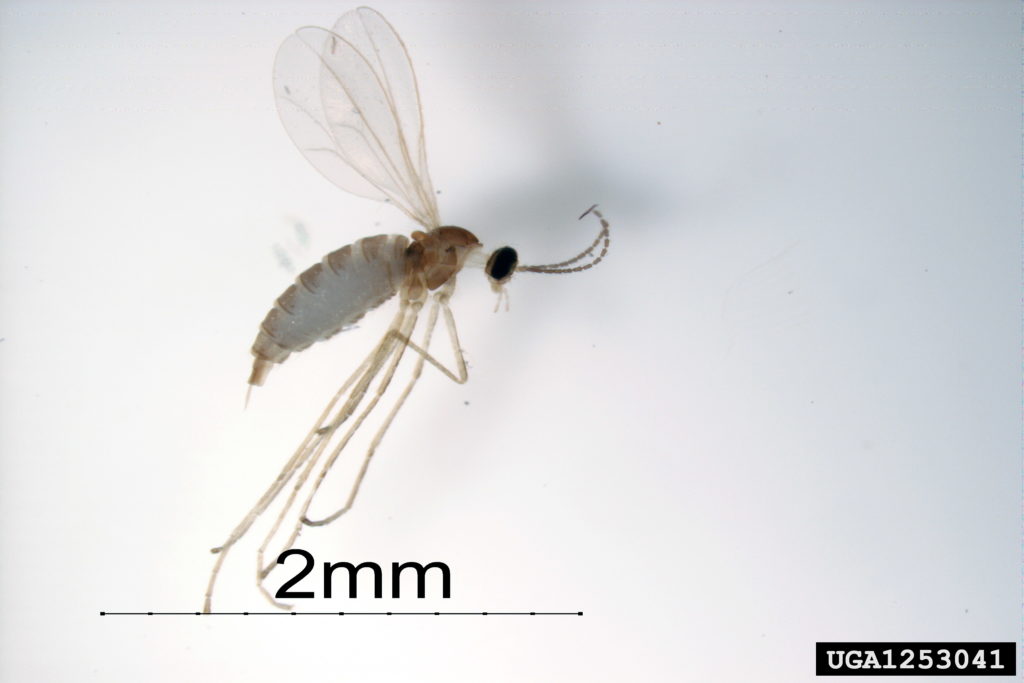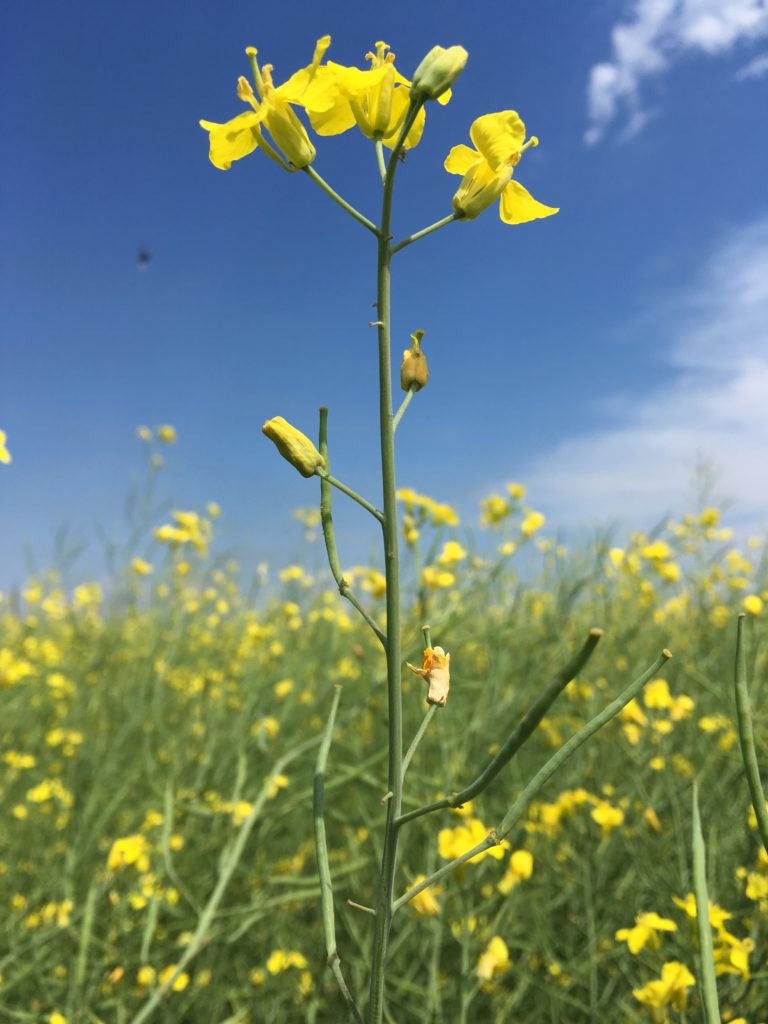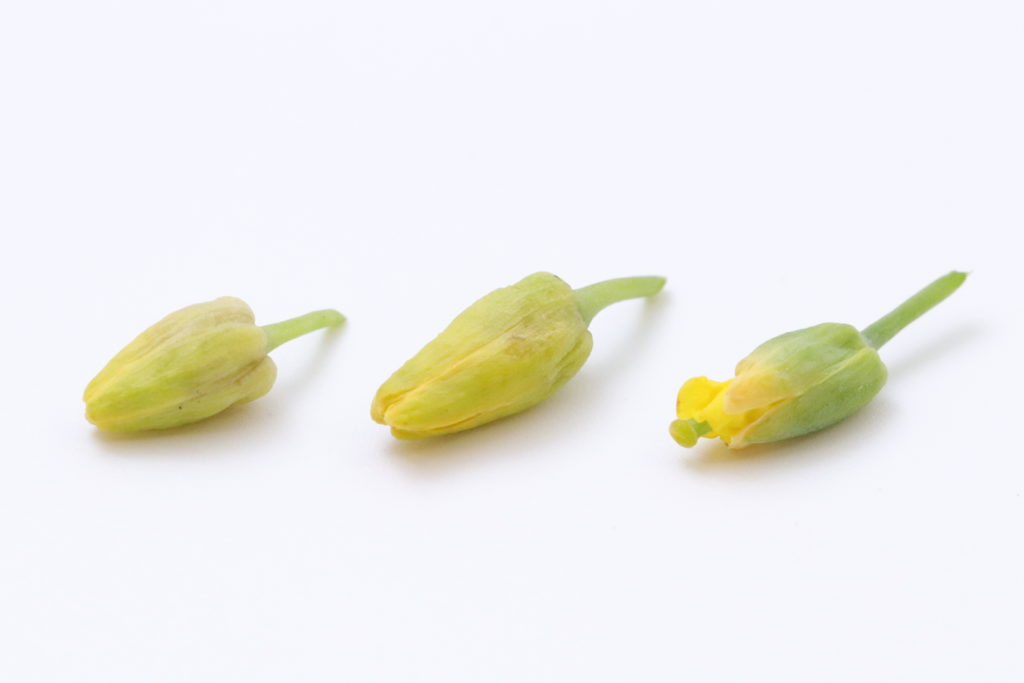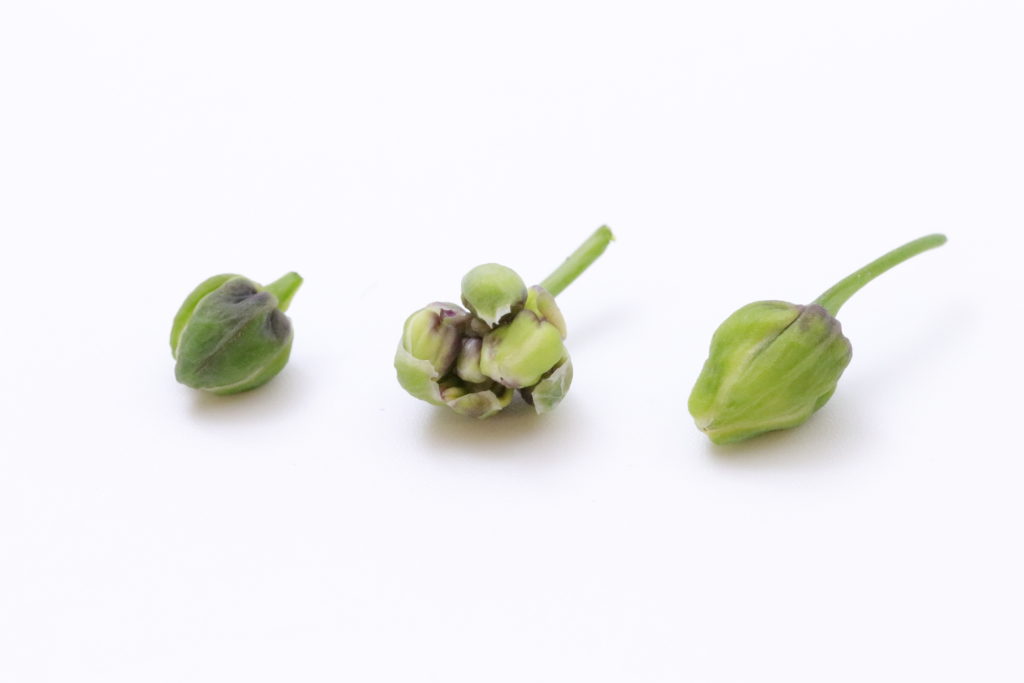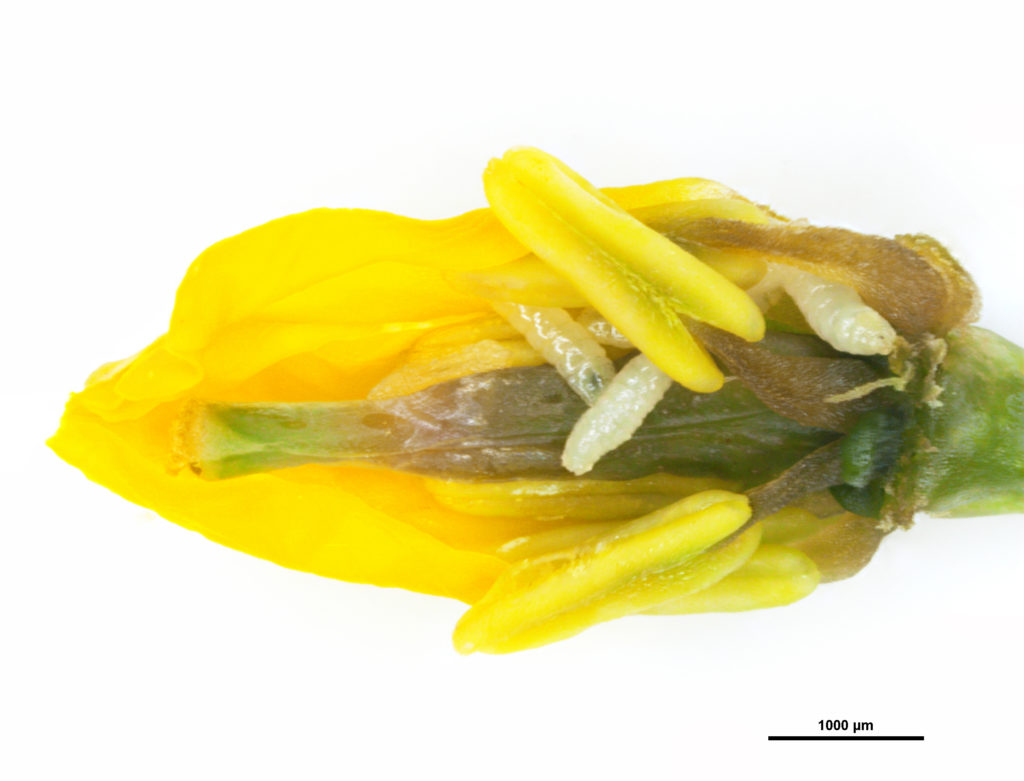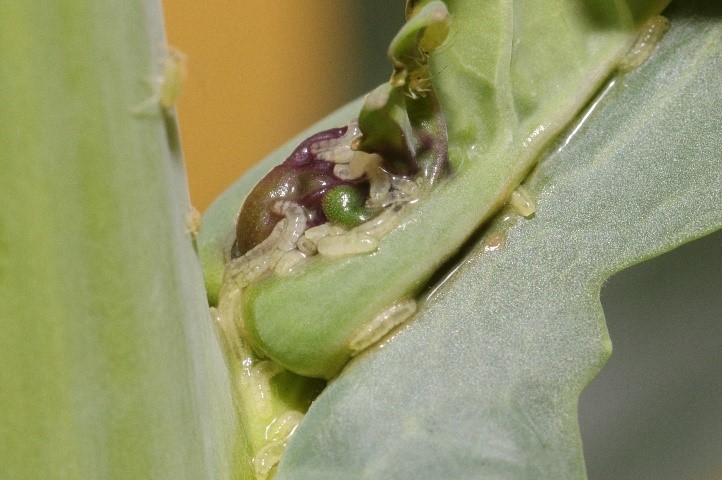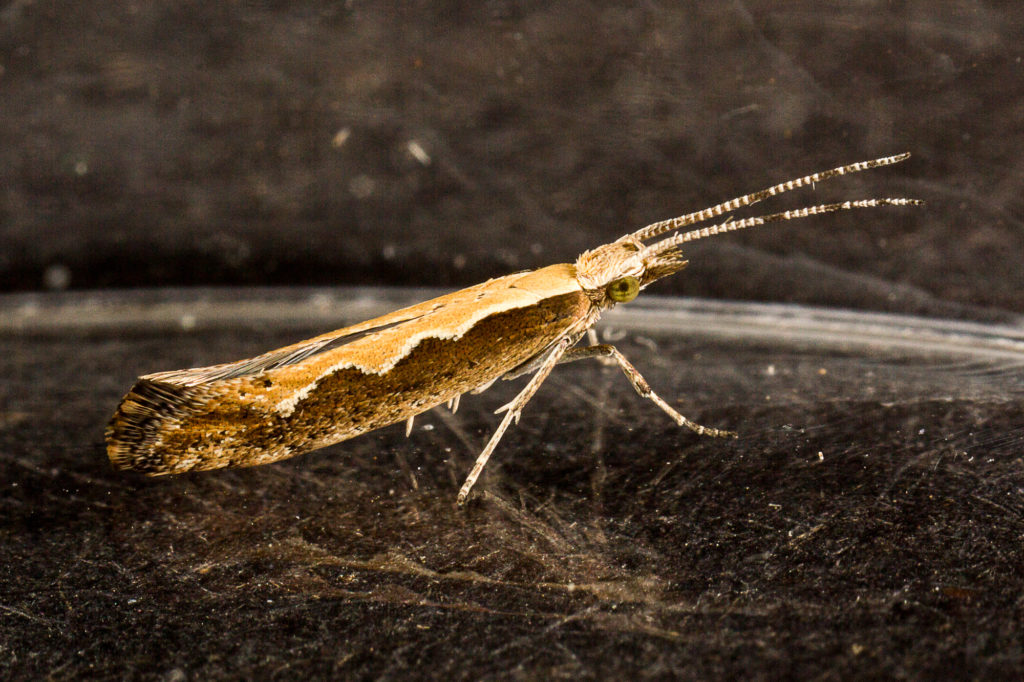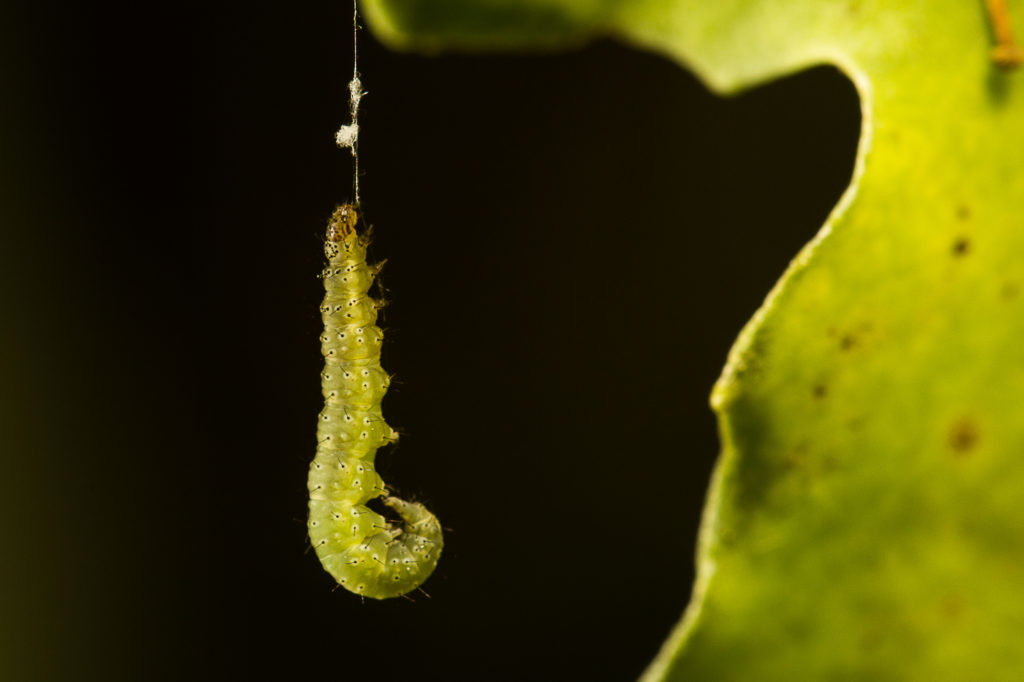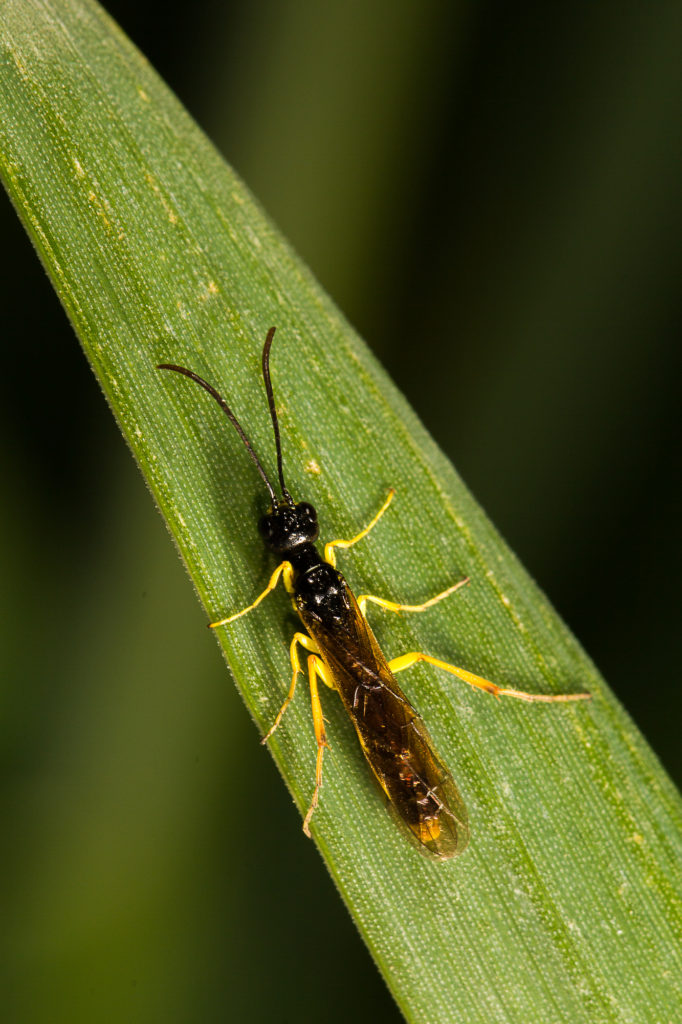
Native to North America, the wheat stem sawfly is an economic pest depending on spring and durum wheat as its main crop hosts. These insects also target winter wheat, rye, grain corn and barley, in addition to feeding on native grass species. It is interesting to note that wheat stem sawflies do not feed on oat crops, as the plant is toxic to these insects.
Wheat stem sawfly larvae feed on the pith of plant stems, impacting crop yield and quality. As these host plants mature, the larvae travel down the stem to its base, where “V” shaped notches are cut into the stem a little above ground level. These notches leave plants vulnerable to collapsing, at which point nothing can be harvested. Because wheat stem sawflies also breed and develop on native grass species, economic damage is more prevalent around crop margins where these plants crossover.
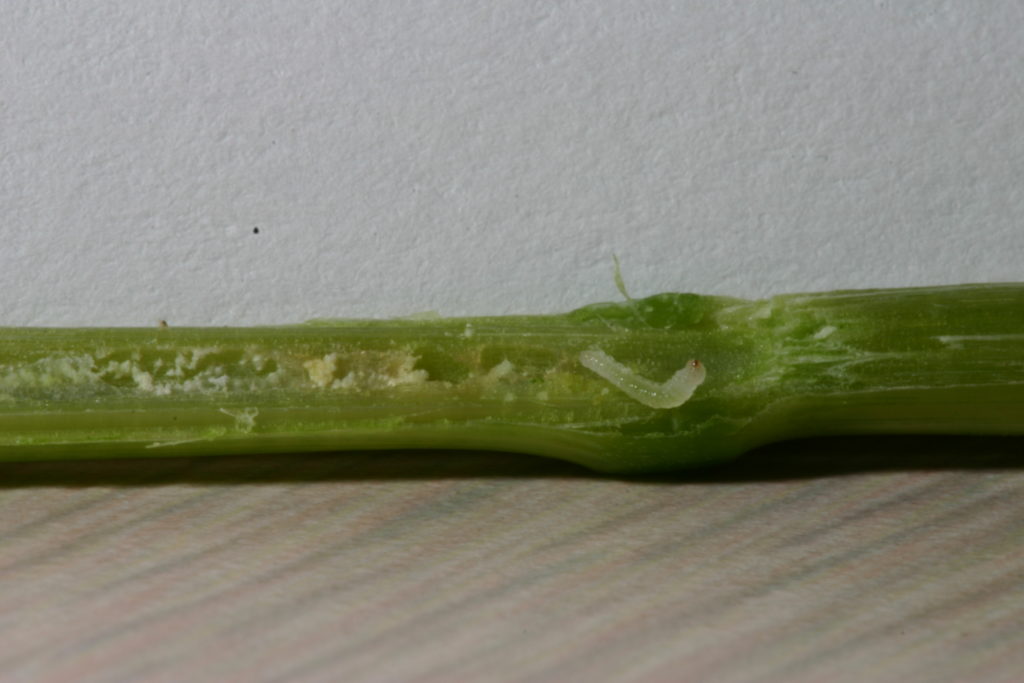
Adult wheat stem sawflies are 8–13 mm long with a wasp-like resemblance, due to their black body and yellow legs. Females have an egg-laying organ (an ovipositor) that extends from their abdomen. When resting on plant stems, these insects will point their heads downward. Mature larvae are 13 mm long and resemble whitish worms with brown heads.
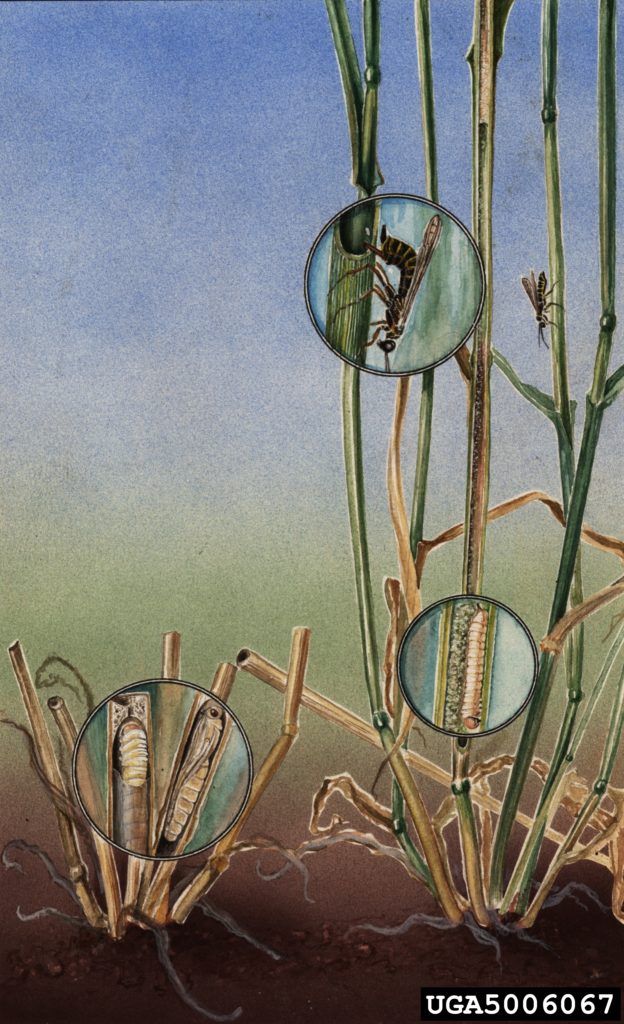
Biological and monitoring information related to wheat stem sawflies in field crops can be found on our Monitoring page as well as on provincial Agriculture Ministry pages (Manitoba, SaskatchewanandAlberta). For more information, visit the wheat steam sawfly page in the Field Crop and Forage Pests and their Natural Enemies in Western Canada: Identification and Management field guide. (en français : Guide d’identification des ravageurs des grandes cultures et des cultures fourragères et de leurs ennemis naturels et mesures de lutte applicables à l’Ouest canadien).

